
Cinematographers, gaffers, production managers, and producers that can reduce the carbon footprint as well as their energy costs with innovative solutions that were presented by various exhibitors at the first Euro Cine Expo in Munich. At the Green Film Shooting panel discussion Green currency for the media industry, international industry experts such as Fabio De Sisti, CEO of the De Sisti Lighting company, Anna Piffl, CEO of Academy Award winning lens manufacturer P+S Technik, Rainer Hoenig, CEO of the innovative start up betteries, Maher Maleh, Founder of the Swiss-German company CineGreen as well as Prof Dr. Matthias Kunert discussed environment-friendly approaches which are ranging from the rehousing of vintage lenses and the use of energy saving lights up the energy supply on set by batteries. While the bettery system can store 3 kWh to 12 kWh of energy, CineGreen’s NXTGEN 25 &145, a mobile power solution based on Li-Ion battery technology, provides 25 kWh and 145 kWh.
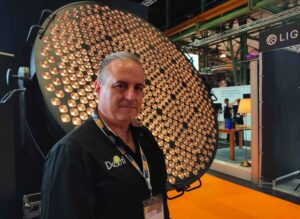 The resource and energy saving technologies were showcased at Euro Cine Expo where visitors could take a closer look at the eco-innovations. The Italian company De Sisti Lighting has discontinued all traditional lamps devices, and focuses production only on LED technology. De Sisti Lighting offers LED alternatives that can replace very high power products. A F14HP 580W is able to replace a 1800W HMI Open Face or a 2400W HMI Fresnel
b while a F20 1000W can replace an old 10K Halogen or a 4/6 kW HMI
c. The average energy savings of the De Sisti LED products are estimated to consume about 90 percent less than halogen lamps, 70 percent less than fluorescence lamps and 50 percent less than HMI.
The resource and energy saving technologies were showcased at Euro Cine Expo where visitors could take a closer look at the eco-innovations. The Italian company De Sisti Lighting has discontinued all traditional lamps devices, and focuses production only on LED technology. De Sisti Lighting offers LED alternatives that can replace very high power products. A F14HP 580W is able to replace a 1800W HMI Open Face or a 2400W HMI Fresnel
b while a F20 1000W can replace an old 10K Halogen or a 4/6 kW HMI
c. The average energy savings of the De Sisti LED products are estimated to consume about 90 percent less than halogen lamps, 70 percent less than fluorescence lamps and 50 percent less than HMI.
 The stars of De Sisti Lighting are the innovative LED Lighting Products Muses of Light, which were developed in close collaboration with the Academy Award-winning cinematographer Vittorio Storaro and lighting designer Francesca Storaro. Inspired by the Nine Muses, the personifications of knowledge and the arts, especially poetry, literature, dance and music in the ancient Greek mythology, the Muses of Light offer a range of high power Vari-White LED lighting fixtures that can replace the high power tradition lighting fixtures tungsten and HMI.
The stars of De Sisti Lighting are the innovative LED Lighting Products Muses of Light, which were developed in close collaboration with the Academy Award-winning cinematographer Vittorio Storaro and lighting designer Francesca Storaro. Inspired by the Nine Muses, the personifications of knowledge and the arts, especially poetry, literature, dance and music in the ancient Greek mythology, the Muses of Light offer a range of high power Vari-White LED lighting fixtures that can replace the high power tradition lighting fixtures tungsten and HMI.
The single LED Calliope is designed to create a  true separation between its light and and the shadow that surrounds it. Meanwhile Melpomene, a geometric triangle figure, provides a dramatic light and pierces the darkness of non-knowledge. Tersicore, the element of multiform light, represents dance. Its optics have a large beam of soft light that is not too widespread. Clio, the sister of Tersicore, is a multiform light that comes as a rectangle with a smaller beam.
true separation between its light and and the shadow that surrounds it. Meanwhile Melpomene, a geometric triangle figure, provides a dramatic light and pierces the darkness of non-knowledge. Tersicore, the element of multiform light, represents dance. Its optics have a large beam of soft light that is not too widespread. Clio, the sister of Tersicore, is a multiform light that comes as a rectangle with a smaller beam.
Polymnia has the geometric form of a pentagon and provides diffused soft lights. Erato gives birth to the figure of an Exagon of soft light which is slightly wrapped. Euterpe stands for the simplicity. Its geometric shape of the octagon is a symbol of the inifinite. Talia is the maximum extension of multiform light, suffused, soft, wrapping and balancing. The ninth Musa Urania goes beyond the earth and the seven planets. It is a new shape, it illuminates about 180 degree in a constant way a large vertical space, like the classic backdrop.
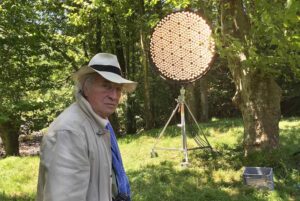 In addition to the Nine Muses there is the new Musa Aurea, whose name is inspired by the cinema. As a circle of light Aurea is a possible metaphor of a series of sun rays which are shining as much as an artificial light can. Aurea only consumes 1980W but it can replace an old 20K Halogen or a 12 kW HMI. The Academy Award-winning cinematographer Vittorio Storaro used the Aurea lights when he shot Woody Allen’s most recent romantic comedy Rifkin’s Festival at the San Sebastian Film Festival.
In addition to the Nine Muses there is the new Musa Aurea, whose name is inspired by the cinema. As a circle of light Aurea is a possible metaphor of a series of sun rays which are shining as much as an artificial light can. Aurea only consumes 1980W but it can replace an old 20K Halogen or a 12 kW HMI. The Academy Award-winning cinematographer Vittorio Storaro used the Aurea lights when he shot Woody Allen’s most recent romantic comedy Rifkin’s Festival at the San Sebastian Film Festival.
W hile diesel generators on set are polluting the planet by burning fossil fuels for lighting, base camp, and catering, the CineGreen power unit is charged with electrical energy from the grid. It runs silently without producing fumes or heat and can even be operated indoors. The system, having already been successfully used by the construction industry in Switzerland, provides a stable power source with 25 kWh and 145 kWh and can be fully charged in four hours. „Due to its technical infrastructure, the unit can even cope with 150 percent overload because of the power distribution to the cells“, stresses Maher Maleh, Founder of CineGreen Germany. While diesel generators always produce a certain output, the battery solutions only provide the power which is actually needed. „This is an economic advantage because the system saves about thirty percent on energy“, says Dr. Krzystof Drabik, Techno Economic Advisor.
hile diesel generators on set are polluting the planet by burning fossil fuels for lighting, base camp, and catering, the CineGreen power unit is charged with electrical energy from the grid. It runs silently without producing fumes or heat and can even be operated indoors. The system, having already been successfully used by the construction industry in Switzerland, provides a stable power source with 25 kWh and 145 kWh and can be fully charged in four hours. „Due to its technical infrastructure, the unit can even cope with 150 percent overload because of the power distribution to the cells“, stresses Maher Maleh, Founder of CineGreen Germany. While diesel generators always produce a certain output, the battery solutions only provide the power which is actually needed. „This is an economic advantage because the system saves about thirty percent on energy“, says Dr. Krzystof Drabik, Techno Economic Advisor.
 The portfolio of Munich-based technology manufacturer P+S Technik includes rehousing as well as lens service and repair. With thirty years of knowledge and engineering in the field of cinematography the company offers services for vintage and cine lenses.
Not only vintage lenses, but also new lenses are likely to get surface scratches. P+S Technik is specialized in lens restoration and recovery, which includes polishing as well as grinding if deep scratches cannot be restored by polishing only. Further services that P+S Technik provides are glass cementing, re-coating, decolorizing of yellow glasses as well as a glass analysis. The office, the assembly line, and the vast machine room are all powered by in-house generated renewables. “Our photovoltaic installation generates about a third of our energy consumption“, says Anna Piffl, CEO of P+S Technik. Furthermore, circular economy is a daily routine since many years. Scrap metal, junk, and old parts are collected and separated for recycling.
The portfolio of Munich-based technology manufacturer P+S Technik includes rehousing as well as lens service and repair. With thirty years of knowledge and engineering in the field of cinematography the company offers services for vintage and cine lenses.
Not only vintage lenses, but also new lenses are likely to get surface scratches. P+S Technik is specialized in lens restoration and recovery, which includes polishing as well as grinding if deep scratches cannot be restored by polishing only. Further services that P+S Technik provides are glass cementing, re-coating, decolorizing of yellow glasses as well as a glass analysis. The office, the assembly line, and the vast machine room are all powered by in-house generated renewables. “Our photovoltaic installation generates about a third of our energy consumption“, says Anna Piffl, CEO of P+S Technik. Furthermore, circular economy is a daily routine since many years. Scrap metal, junk, and old parts are collected and separated for recycling.
Photos: © Courtesy of De Sisti Lighting, P+S Technik, GFS




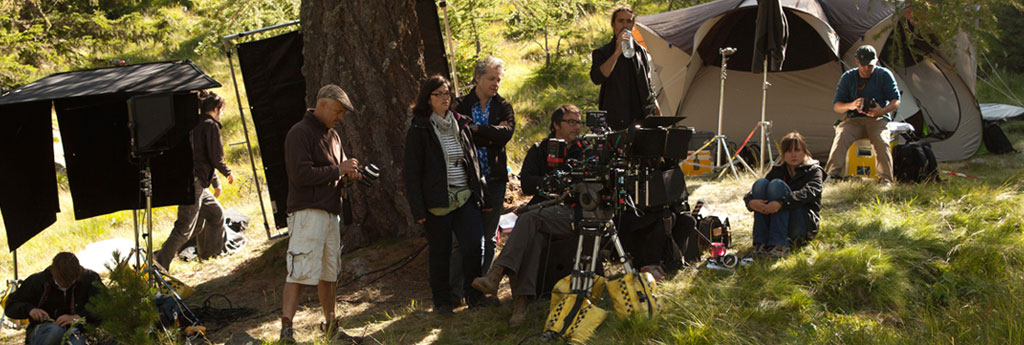








 Robert Redford
Robert Redford Hannes Jaenicke
Hannes Jaenicke Nic Balthazar
Nic Balthazar Nadeshda Brennicke, Actress
Nadeshda Brennicke, Actress Darren Aronofsky, Director, Noah / Jury President, 65th Berlin International Film Festival
Darren Aronofsky, Director, Noah / Jury President, 65th Berlin International Film Festival Tim Bevan
Tim Bevan Thekla Reuten
Thekla Reuten Rachael Joy
Rachael Joy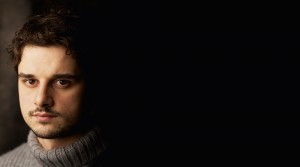 Nikola Rakocevi
Nikola Rakocevi Nadja Schildknecht
Nadja Schildknecht Michael Bully Herbig
Michael Bully Herbig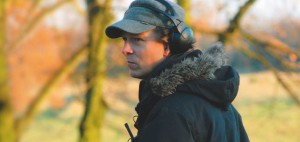 Lars Jessen
Lars Jessen Helen Hunt
Helen Hunt Douglas Trumbull
Douglas Trumbull Dieter Kosslick, Director Berlin International Film Festival
Dieter Kosslick, Director Berlin International Film Festival Benoit Delhomme
Benoit Delhomme Jeremy Irons
Jeremy Irons